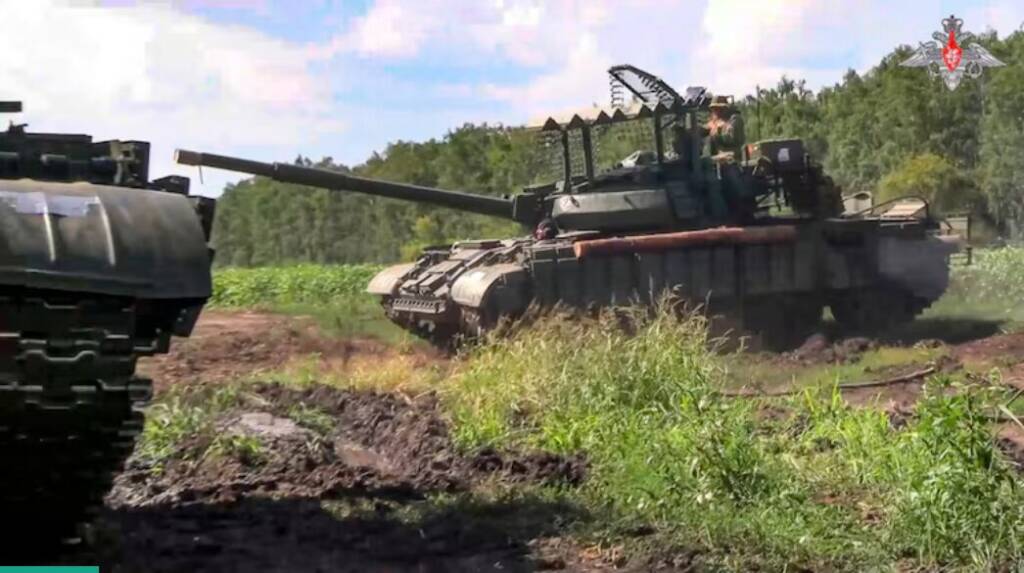In a dramatic escalation of the ongoing conflict, Ukrainian military forces have taken control of 28 towns and villages in Russia’s Kursk region, marking the most significant foreign incursion into Russian territory since World War II. This bold move has prompted the evacuation of approximately 180,000 residents, with fears of further escalation mounting.
Ukrainian forces have reportedly penetrated up to 12 kilometers (7.5 miles) into Russian territory, establishing control over a border area stretching at least 40 kilometers wide. Ukrainian President Volodymyr Zelenskyy confirmed the operation in a recent address, highlighting it as a strategic maneuver to “push the war out into the aggressor’s territory.
The rapid advance has led to significant upheaval in the Kursk region, with local officials reporting that about 120,000 people have already been displaced and an additional 60,000 are awaiting evacuation. Russian President Vladimir Putin, during a televised meeting with top security officials, emphasized the urgent need to focus on assisting the displaced populations while vowing to drive out Ukrainian forces and secure the state border.
Putin described the Ukrainian offensive as a “major provocation” and underscored that Russia’s primary task is to repel the invaders and protect its territory. The Russian Defense Ministry has been instructed to fortify defenses and counterattack, while the Border Service is tasked with maintaining a reliable protection of the state border.
The incursion is not only a tactical challenge for Russia but also a political one, as the Ukrainian operation threatens to destabilize domestic Russian politics. Analysts, including Matthew Savill from the Royal United Services Institute, have noted that sustaining a significant military presence within Russia and defending against potential counterattacks will be a formidable task for Ukraine.
The scale of the Ukrainian advance has been somewhat contentious, with Ukraine claiming control over up to 1,000 square kilometers of Russian territory. However, skepticism remains regarding the full extent of this control, with some observers questioning the accuracy of these claims.
In response to the situation, Russia has deployed additional reinforcements to the affected areas and placed neighboring regions on high alert. Russian officials have warned that the conflict could spread further, and Governor Vyacheslav Gladkov of Belgorod has reported that 11,000 people have been evacuated from the Krasnoyarsk district, which is nearest to the border.
The Ukrainian incursion comes amidst ongoing military operations and a high-stakes political environment. President Zelenskyy has framed the operation as a countermeasure to Russia’s own offensive actions in eastern Ukraine and a means to compel Russia to seek peace negotiations.
International reactions have varied, with U.S. Senator Lindsey Graham praising the incursion as “brilliant” and “bold,” urging the Biden administration to provide further support to Ukraine. Meanwhile, concerns have been raised about potential retaliatory measures by Russia, which could exacerbate the humanitarian crisis and escalate attacks on Ukrainian civilian infrastructure.
In addition to the military conflict, the situation at the Zaporizhzhia nuclear plant has also drawn international attention. The International Atomic Energy Agency has inspected a damaged cooling tower at the plant, which caught fire recently under contentious circumstances. Ukrainian officials have accused Russia of using the incident to “blackmail” Ukraine, while Russian authorities have blamed Ukrainian shelling.
As the situation continues to evolve, both regional and global stakeholders are closely monitoring the conflict’s developments, with significant implications for the future of Ukraine-Russia relations and regional stability.
